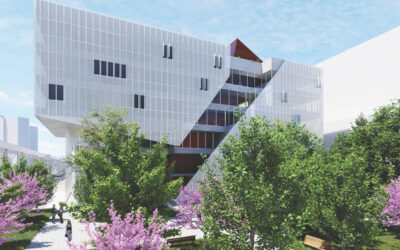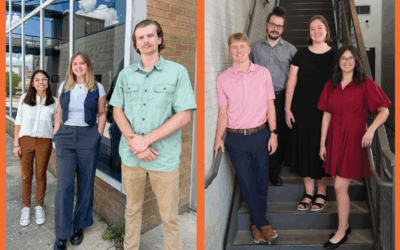In the world of healthcare facility design, where precision and compassion intersect, electrical engineer Brent Hamling, PE, has carved a niche for himself in healthcare lighting expertise. His career has included impactful projects, innovative solutions, and a keen eye for merging technical expertise with human-centric needs.
Brent keenly understands the differences when designing for healthcare versus other industries in the need for designs that blend functionality with a welcoming atmosphere.
“Healthcare facilities have some of the most stringent and far-reaching codes and standards in the industry compared to other types of construction,” he said. “Healthcare facilities are visited by almost everyone, from the youngest to the oldest in our society. I feel that healthcare facilities are unique in that regard. The design must consider the functionality of the space for everyday occupants and feel welcoming and comfortable for the patients, whether they visit frequently or infrequently. Not everyone visits a corporate headquarters, bank, or typical office building, but almost everyone experiences a clinic or hospital at some point.”
It’s this mindset that informs every healthcare project Brent touches. Some projects that stand out to Brent specifically include the UAMS Winthrop P. Rockefeller Cancer Institute and Arkansas Children’s South Wing and current MFP expansion.
“UAMS stands out because it provided a wide variety of functions throughout the facility and incorporated some interesting lighting as LED technology was becoming more prevalent,” he said. “The Children’s projects stand out because they are major expansions to the regions premier pediatric hospital.”
Challenges are inherent in the healthcare sector, and Brent has faced them head-on in several outpatient clinics.
“I’ve had a couple of outpatient clinics where foresight was given to the potential for future services,” Brent said. “Considering the advanced level of care which could be provided, systems had to be designed to accommodate future needs without putting excessive burden on the first cost.”
Navigating the complexities and challenges of regulations in the healthcare industry while still being innovative in design is something Brent takes seriously.
“I take a methodical approach, reviewing the criteria and understanding the baseline requirements of all associated codes, standards, and owner preferences, then seeking out products and techniques that achieve those results in the most effective, flexible ways,” he said.
Innovation plays a pivotal role in Brent’s approach to healthcare design engineering, particularly in spaces like imaging systems and operating rooms.
“Integrating special systems in these spaces requires careful coordination with other disciplines and manufacturers,” he said.
Understanding of systems and spaces is essential for balancing technical aspects with human-centric needs, a skill that sets Brent apart.
“I constantly keep in mind that patients and their families may be experiencing their worst fears and hardest challenges in an unfamiliar place,” Brent said. “They may also be experiencing their greatest joy in a positive diagnosis or the birth of a child. It’s rewarding to have an impact on their experience by coordinating with other designers to bring comfort to patient spaces. It could be as unique as accent lighting integrated with architecture and interior design or as simple as a convenient USB receptacle in a waiting room to charge a phone.”
One project where Brent’s engineering solutions had a significant impact on patient care and staff efficiency is the The Orthopaedic and Spine Hospital at UAMS.
“In the physicians’ locker room, typically a boring back-of-house space, we were able to incorporate some interesting, abstract lighting in the ceiling,” he said. “It was well-received. I’d like to think that a little bit of cool factor in a space helps with staff happiness and therefore efficiency.”
Looking to the future, Brent says operating rooms are advancing quickly and will influence healthcare facility design.
“Prefabricated ceiling systems, higher power demands, specialized lighting, and video integration are among the current trends.”




